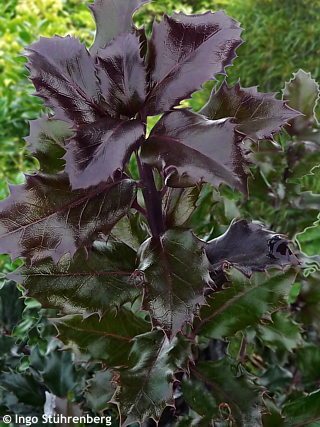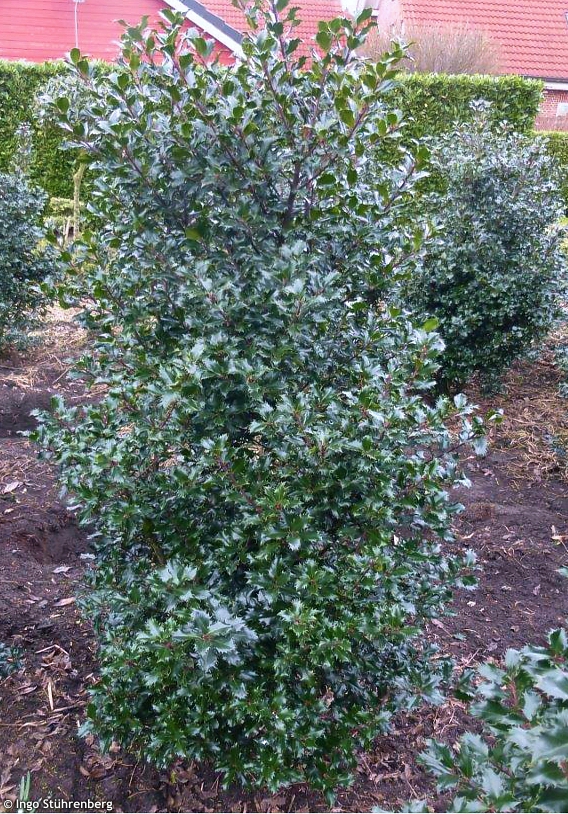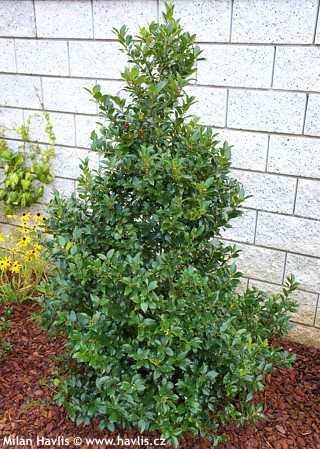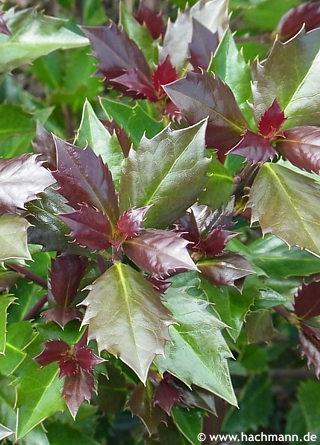Ilex 'DRAGONSKIN' male holly
size/type
medium-sized shrub,taller shrub
usual height
2-4m
usual width
1-2m
leaves
evergreen broadleaf
colour of leaves
location
full sun to shade
soil type
acidic (peaty)
soil moisture requirements
evenly moist (dislikes drought)
USDA zone (lowest)
5b (down to -27°C)
winter protection
for zone 5+6

for zone 7

categorized
Ilex
English hollies are among the most common evergreen and native plants of milder parts of Europe with high humidity – British Isles, north France, Benelux countries, and milder parts of north Germany. Various species form trees, shrubs or thickets. They are absent from natural Central European landscape but can be cultivated without problems. They are renowned for glossy, often prickly leaves, and multiple variegated forms have been selected for garden cultivation.Description of the plant:
Dragonskin is a male holly discovered by Ingo Stühreneberg in his greenhouse, in German nursery town Wiesmoor, it was first introduced at Rhodo 2010. It is a mutation of i. aguifolium ‘Angustifolia’ and obviously has genes of i. x meserveae as its leaves manifest similar autumn and winter coloration and foliage shape like some other blue hollies.Dragonskin holly produces highly glossy, evergreen leaves which reflect as much as 40% of sunrays which protects them from loss of water especially on sunny days during severe frosts; as well as on hot summer days. They emerge deep burgundy red, mature very dark green, and turn deep violet in autumn and winter. It grows moderately into an upright, well-branched shrub about 3-4 m tall and half as wide in maturity. Dragonskin is a male variety yielding only male pollen for most female hollies but does not produce berries itself.
Hollies can be trimmed or clipped in mid-summer. Pruning that will encourage new growths is advised early in the spring (after the frosts). They need fertile, acidic, moist but well-drained soil. Most of them are very hardy and do not suffer from sunscorch in winter so you can place them in both full sun and part shade. In shaded locations they become somewhat irregular and leggy. Hardy to about -27°C (USDA zone 5b).
Last update 11-02-2021
QUICK PRICE OVERVIEW
CURRENTLY SOLD OUT
WANT TO TRY A SIMILAR PLANT?



















